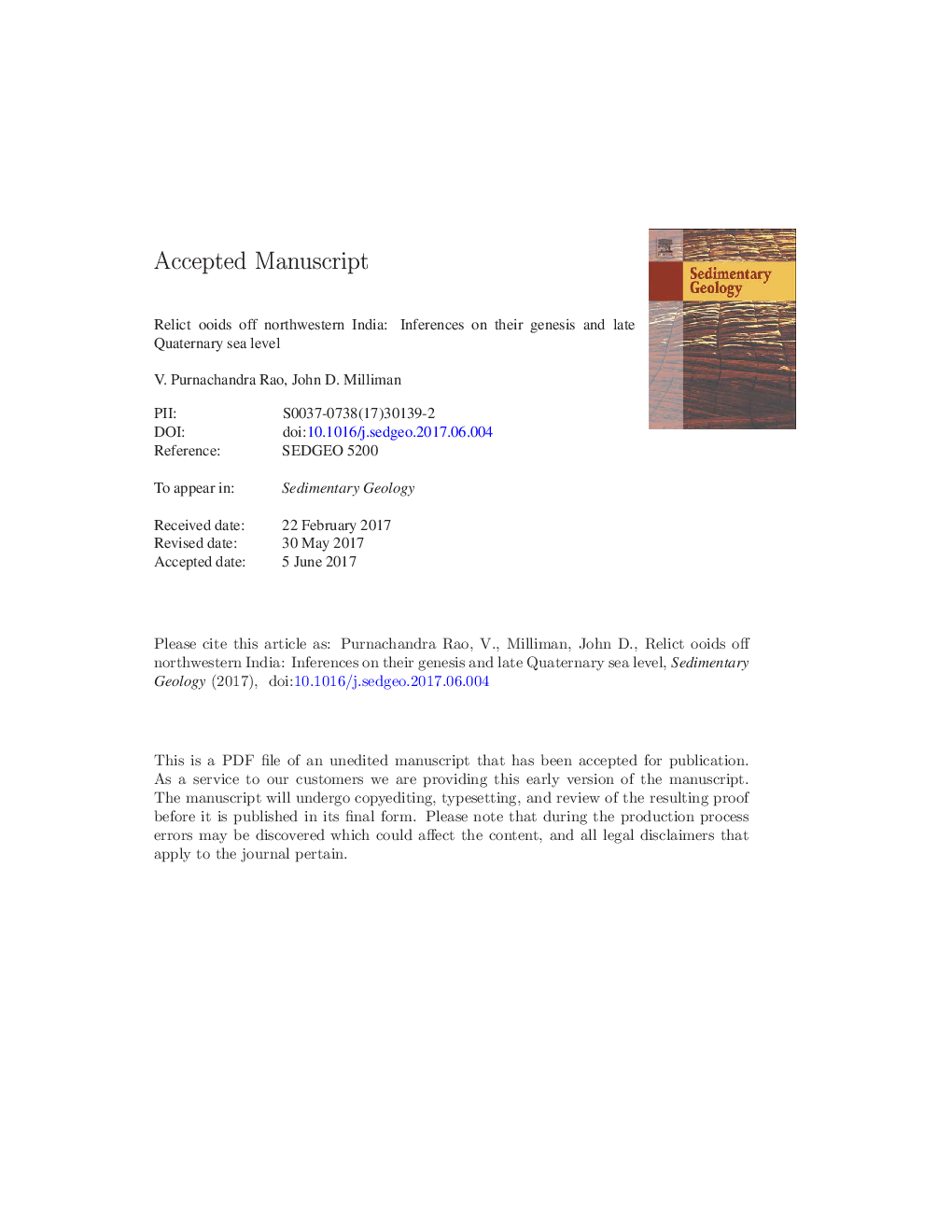| Article ID | Journal | Published Year | Pages | File Type |
|---|---|---|---|---|
| 5781341 | Sedimentary Geology | 2017 | 33 Pages |
Abstract
Relict carbonate sands dominated by ooids and faecal pellets are common on the continental shelf, between 60 and 110 m, off northwestern India. The shiny tan/white aragonitic ooids closely resemble modern Bahamian ooids, with cortex thicknesses varying from < 5 μm to 200 μm. Tangential laminae, ranging from 1 μm to 20 μm in diameter, occur as straight to contorted stacked tubules, similar in appearance to algal or microbial filaments. Bacteria associated with the decaying organic sheath of the laminae may have played an important role in subsequent aragonite precipitation. Bladed or radial aragonite microstructures are secondary features in the cortex, apparently formed during early diagenesis by mineralization of organic matter associated with the tangential laminae. Calibrated ages of the ooids range between 9.8 and > 23 ka BP, and δ18O values suggest that these relict ooids formed during cooler and drier post-LGM conditions and later during the re-intensified Holocene monsoon climate. An age vs. depth plot suggests that most of the ooids formed at water depths between ~ 10 and â 40 m, thereby calling into question whether relict shelf ooids are reliable indicators of past sea level.
Keywords
Related Topics
Physical Sciences and Engineering
Earth and Planetary Sciences
Earth-Surface Processes
Authors
V. Purnachandra Rao, John D. Milliman,
